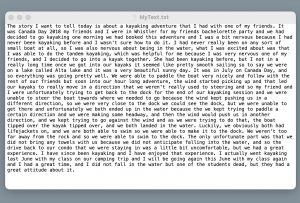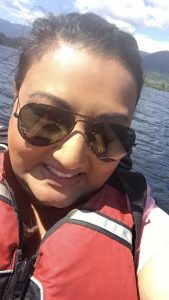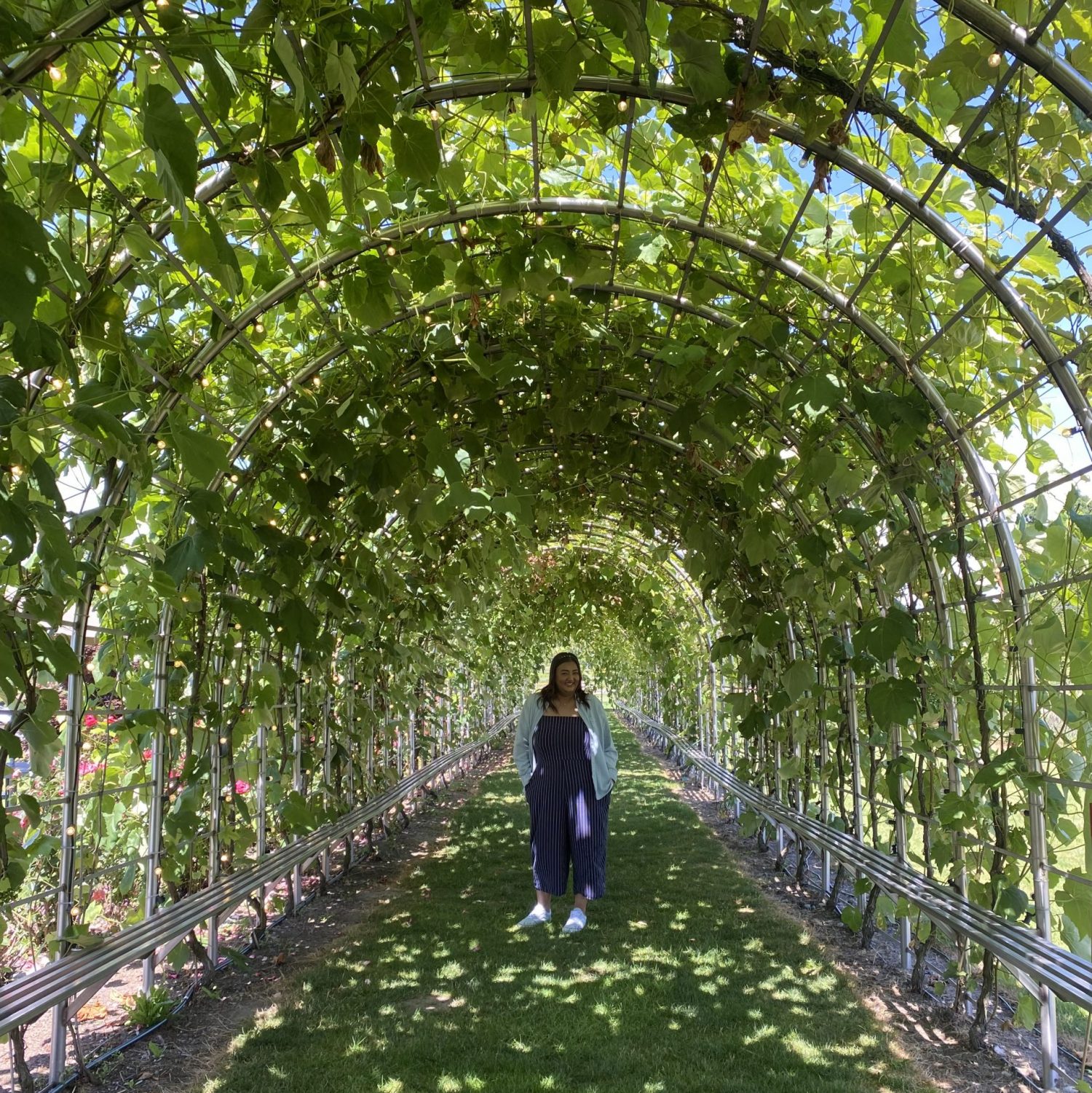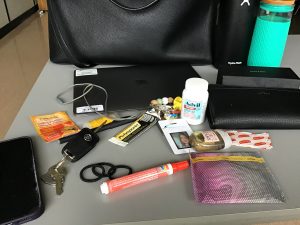
The story I chose to tell was about my first experience kayaking on Alta Lake in Whistler. I thought it would be a good story to tell because it ended in a funny way and I look back and laugh about the situation now. I also found myself telling my students this story, last year when we took our grade 6/7 camp trip and one of the activities was kayaking.
 (pre lake submersion)
(pre lake submersion)
Reflection
I used the app called Dictate to complete my voice to text assignment. I chose this app because it was the first one I saw when I completed my search in the app store. I tried to tell this story in the app without thinking about it much beforehand because I wanted to try and get a realistic view of what it would be like to use a voice to text app. I do not have much experience with using these applications as I have not found it necessary in the past. As an English major, I do enjoy writing and typing so these types of apps defeat the joy for me.
- How does the text deviate from conventions of written English?
One of the most important things that stood out to me in the text version of my oral story is the lack of proper punctuation in the correct spots. The text does include periods and some commas but they are not always in the natural spots in which I would place them if I had typed or written this story out. For example, I had said: “It was Canada Day 2018 my friends and I were in Whistler for my friends bachelorette party and we had decided to go kayaking one morning we had booked this adventure and I was a bit nervous because I had never been kayaking before and I wasn’t sure how to do it.” I would have split this portion into two sentences and put a period after the word “morning”. I remember when speaking this text into the app that I had tried to take proper pauses when speaking because I thought that would trigger the app to add a period but it did not. I also found that I was surprised that some of the words had changed from what I had said. There is one sentence towards the end where I had spoken “one of the students did” but the app had changed the word “did” to “dead”.
- What is “wrong” in the text? What is “right”?
One of the things that surprised me was the places the app was able to get right. I was not too shocked with the app recognizing Whistler and capitalizing it but I was surprised that Alta lake was recognized. There are also many places in the text where commas are used more than once in a sentence that is grammatically correct.
As previously mentioned above, the text has some errors in forgetting punctuation or not recognizing a couple of the words I was saying.
- What are the most common “mistakes” in the text and why do you consider them “mistakes”?
Many of the mistakes in the text have to do with grammar and the lack thereof. There are many run-on sentences that make me a bit frustrated because they make the story feel like it is being told by a child who is not used to conventions in writing. When my story gets to the part where we are trying to paddle back to the dock and the kayak tips over, there are so many commas but no logical stopping point or period that would have added to the story and made it easier to follow and understand. They are mistakes to me because they don’t elevate the story and instead make me notice the flaws.
- What if you had “scripted” the story? What difference might that have made?
I think that scripting the story would have made it easier for me to deal with pacing issues. Had I had a script to read off I maybe would have been better at taking the necessary pauses I needed to as well as perhaps enunciating more which would have hopefully triggered the app to clue into where punctuation, specifically commas, were to be placed.
One drawback to scripting the story would mean that it may have been shorter and I may have struggled to add more details. As I was telling the story into the app, I was watching the clock on my laptop to pace my story to get to five minutes. If I had scripted the story, I would have cut out what I would deem “unnecessary” parts and therefore may need to include more to make it to that mark.
- In what ways does oral storytelling differ from written storytelling?
Oral storytelling, for me, is more colloquial and less formal but on the other hand, sometimes more powerful and has the power to leave a lasting impact. As someone who reads a lot of books, I find that written storytelling has the hinderance of having to be descriptive enough without being boring so to envelop the reader into the characters and the world that is being described. Oral storytelling already has an element of interest because it is being spoken and tone and pitch can draw the listener in.
Oral storytelling has been around since the beginning of time, it has been how most civilizations have been able to pass down and share information whereas, writing, is a bit newer; “Humans created two major systems of visual symbols to express themselves and to communicate with others: art and writing.” (Schmandt-Besserat and Erard, 2007, p. 7) Written storytelling has often had an air of sophistication surrounding it because it requires a greater deal of knowledge surrounding language structures and conventions in order to thrive but both oral and written storytelling aim to inform, entertain, and pass down knowledge to a vast majority of people.
References
Schmandt-Besserat, D., & Erard, M. (2007). Origins and forms of writing. In C. Bazerman (Ed.), Handbook of research on writing: History, society, school, individual, text (pp. 7-26). Routledge.

 .
. 